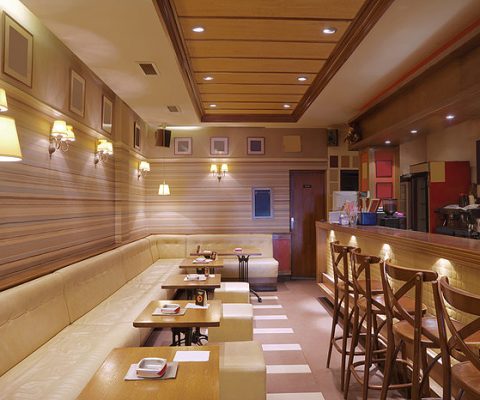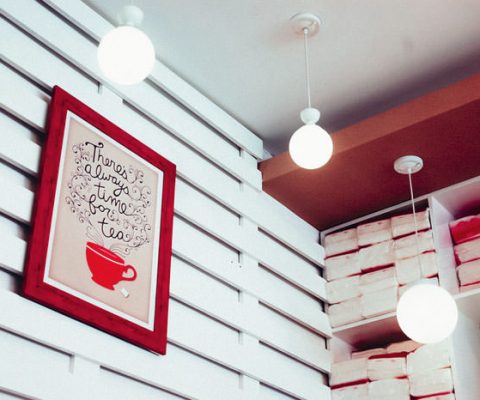Lighting in a home changes the mood of a room just as it does the perceived size of a room. Placement and type are important aspects of interior design, and they work in conjunction with color selections, room size, availability of natural light and furniture selection. The elements that come together when the right lighting is achieved transform a room into a seamless combination of functionality and style.
Color Management
The use of lighting can add to or subtract from the overall colors of a room or from only those surfaces the light is meant to enhance. Darker colors make a room feel smaller and cramped, while light-colored walls do the opposite. The illusion of space is defined by light reflected off of the surfaces of the walls. Some types of lighting help with this illusion by further illuminating the walls. In addition, directional lighting, such as a track light, can soften the wall colors. There is also recessed can lighting, which has a soft, downward glow that illuminates the floors, not walls. This is opposed to lights hung from the center of the room, which provide ambient illumination, or wall lighting. In both cases, this can affect how light or dark a colored section can appear.
Directional Lighting
The lighting in a room either provides illumination for the entirety of the room, or it highlights very specific elements. Track lighting is the perfect example of positional lighting. Hung from the ceiling, the adjustable necks and lamps can be pointed at specific elements, such as a wall painting, the vase of flowers on an entryway table or the bar top or kitchen island. Consider mounting them on the walls, also. Special picture and mirror frames also have built-in lighting to highlight specific areas on a wall. Recessed lighting can be used in floors and ceilings to create vertical beams of light as opposed to an overall glow from central light fixtures hanging from a ceiling.
Functionality
One major role of lighting in the interior setting is functionality. Lighting needs to serve a purpose, or it simply wastes electricity. Chandeliers are not only used in large, open foyers, entryways and rooms because of their centrally themed placement but also because they provide excellent illumination for the room. Wall lights add length and size, visually, to an entryway hall, as well as light the way. Consider the style of lighting you want to ensure you get the best directional or luminescent type for the setting. Look into task-specific lighting for desks and other work areas where functionality is more important than overall room illumination.
Space
Both natural and man-made lighting help with the illusion of space. For a darker room, find ways to bring in more full-spectrum natural light. If the room does not have sufficient lighting, it will feel cramped. This is worsened by close-proximity furniture arrangements, such as coffee table, end table, sofa, chair and love seat combinations in a smaller setting. Corner lamps, wall sconces and centrally hanging lights on the ceiling help brighten a room if natural lighting is not available and help create a visually larger space. This applies to any setting — home or office. Natural lighting is preferred above man-made lighting because it shows off colors better and adds to the visual space of a room by bouncing off reflective surfaces. Consider skylights or large windows if you want more natural light, or use sheer drapes and curtains to allow the maximum amount of light from your current windows.


